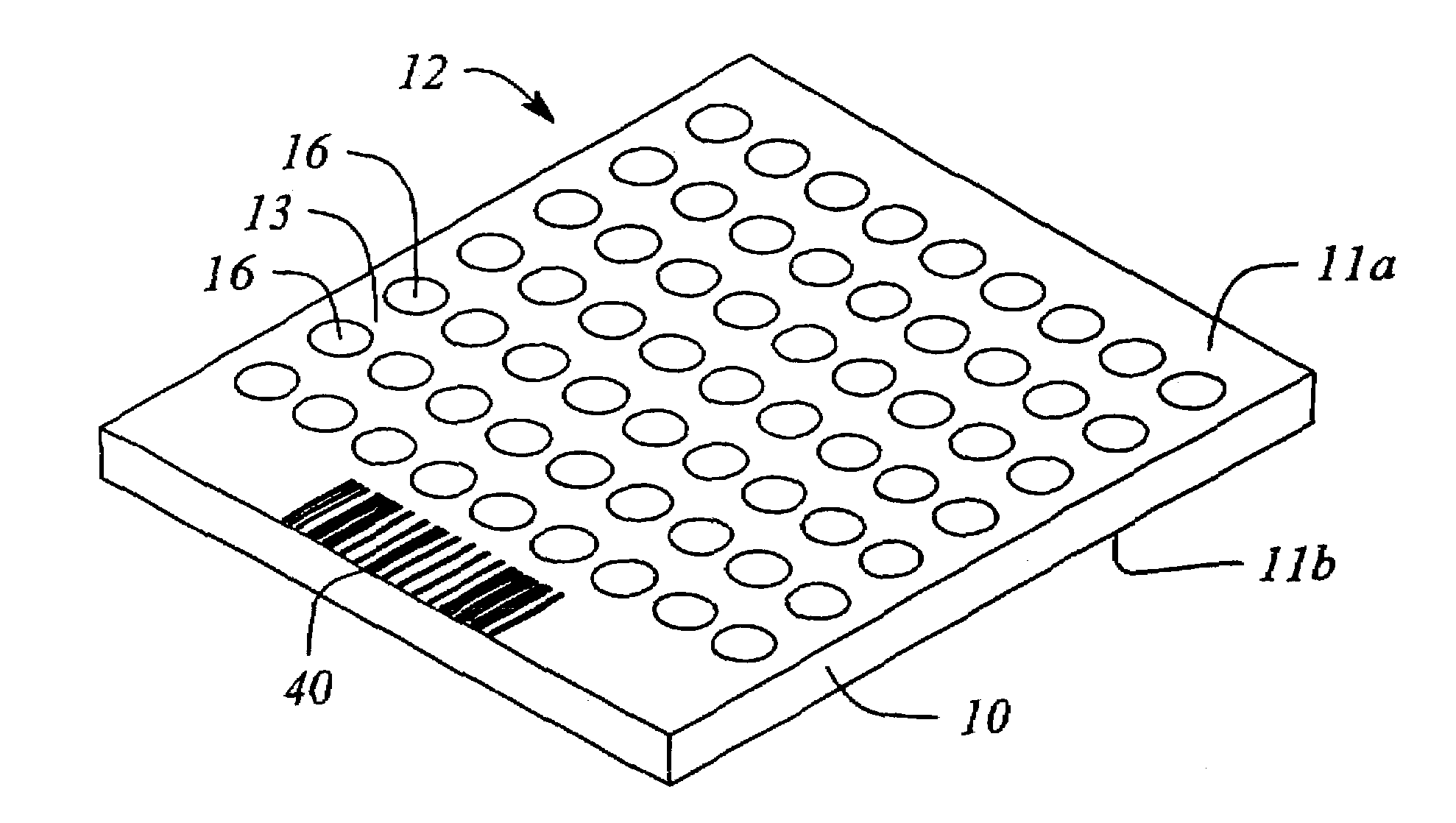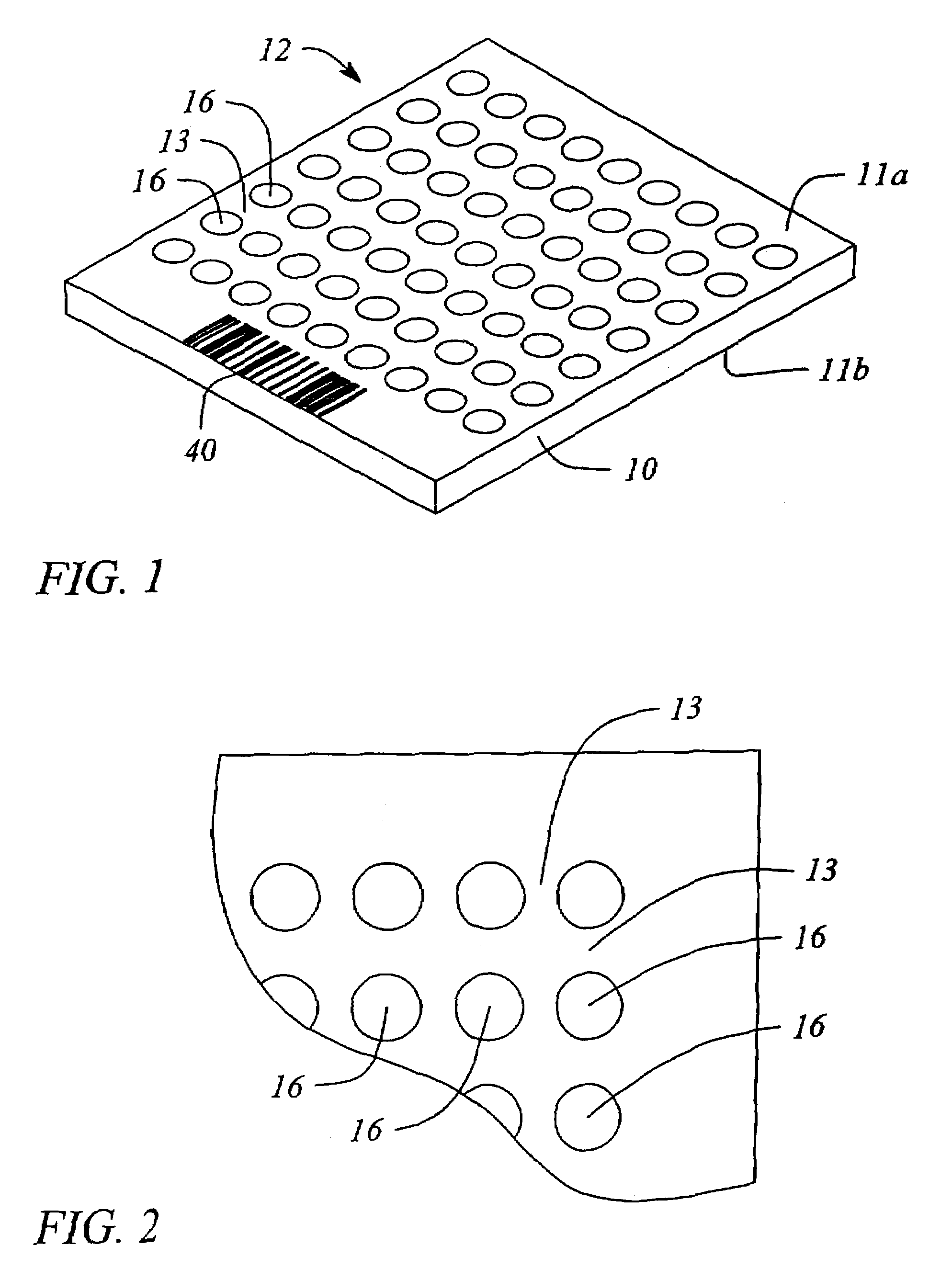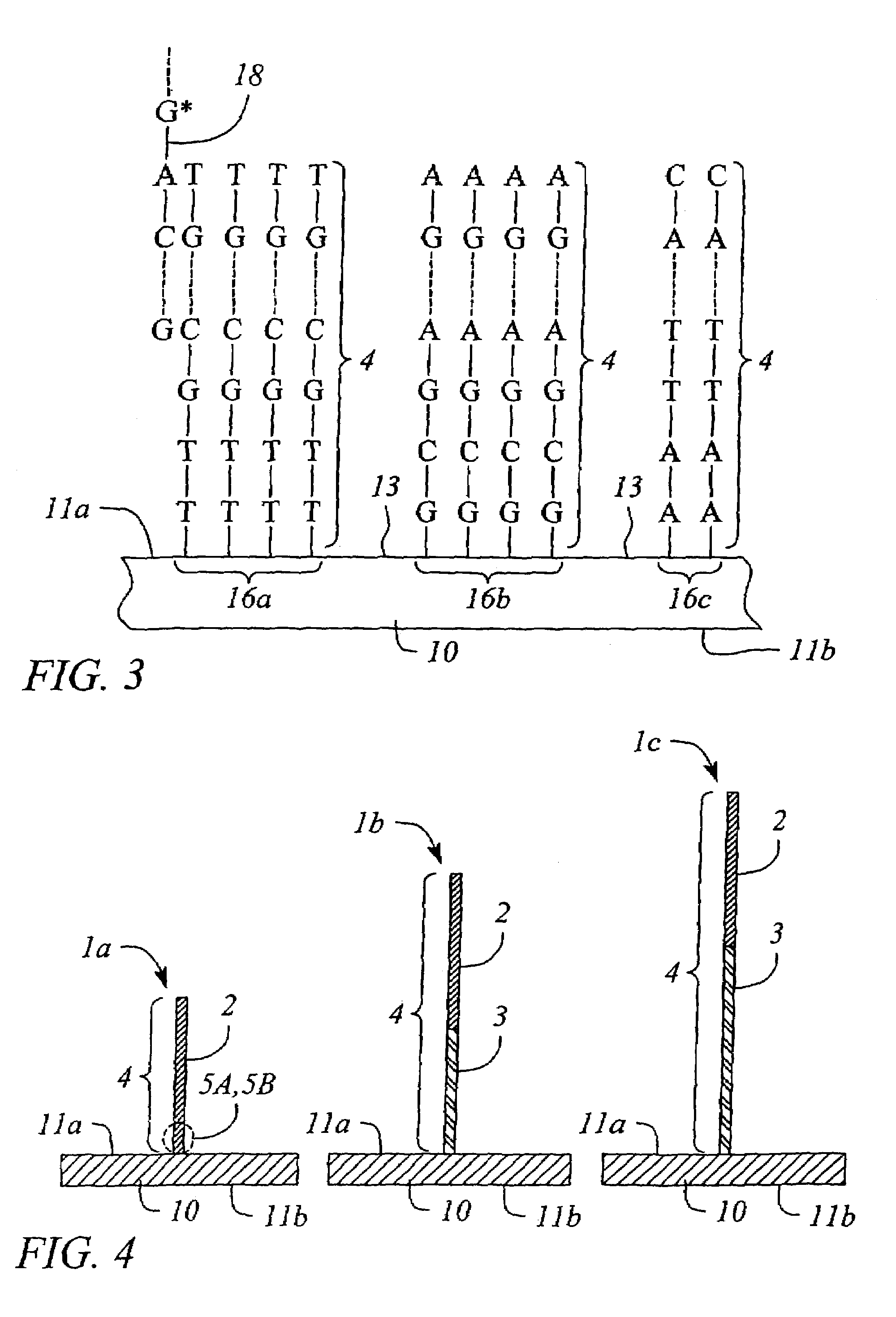Method and apparatus for microarray fabrication
a microarray and fabrication method technology, applied in the field of nucleic acids, can solve the problems of incorrect fabrication of oligonucleotides, ineffective chemistries, and arising problems, and achieve the effects of reducing defect rates, and improving the fabrication of micro array devices
- Summary
- Abstract
- Description
- Claims
- Application Information
AI Technical Summary
Benefits of technology
Problems solved by technology
Method used
Image
Examples
example 1
[0064]The ozone concentration in an experimental environment (array fabrication facility or enclosed housing) was measured by UV absorption at 254 nm at controlled pressure and temperature using an ozone analyzer (Advanced Pollution Instrumentation, San Diego, Calif.). When ozone levels in the housing and / or fabrication facility needed to be controlled, they were increased using an ozone generator (Zontec, Ogdensburg, N.Y.) interfaced to the ozone analyzer through a computer, or reduced by carbon filter in the intake air of the array fabrication facility or housing.
example 2
[0065]Levels of ozone that may exist in a sealed housing or array fabrication facility, were tracked over time. Levels or ozone were measured in parts per billion (ppb) for at least two days or more. Of interest were cycles or patterns correlating with cloud cover or exposure to sun. FIG. 7, shows the typical ozone levels measured in an array fabrication facility in Santa Clara county over a period of several days. Ozone levels were measured in Santa Clara County, Calif. starting on Jun. 29, 2001 at 11:00 A.M. for a period of 75 hours. It is apparent that the ozone concentration follows the diurnal cycle of the sun and that its origin derives external to the housing or array fabrication facility. Over twenty hour periods the levels of ozone were highest in the mid afternoon.
example 3
[0066]In situ DNA micro arrays were synthesized according to the techniques described previously based on phosphoramidite chemistry. Micro arrays were exposed to the ozone-controlled environment after completion of synthesis (all couplings and deprotections), as well as prior to final deprotection (after all couplings). After exposure of the micro arrays to ozone, those were hybridized and washed according to protocols described above and scanned on and Agilent scanner. Hybridization results were analyzed using Agilent software.
[0067]FIGS. 8 and 9 show the hybridization signal of a 25 mer sequence synthesized on non-hybridizing stilts of various length (25, 45 and 60 mer) following ozone exposure and hybridization with its fluorescently labeled complementary strand. The hybridization signal indicated that for the probe closest to the surface (25 mer, no stilt) the original sequence was damaged by increasing exposure time to ozone. The damage induced by ozone was also found to be dep...
PUM
| Property | Measurement | Unit |
|---|---|---|
| Level | aaaaa | aaaaa |
| Defects | aaaaa | aaaaa |
Abstract
Description
Claims
Application Information
 Login to View More
Login to View More - R&D
- Intellectual Property
- Life Sciences
- Materials
- Tech Scout
- Unparalleled Data Quality
- Higher Quality Content
- 60% Fewer Hallucinations
Browse by: Latest US Patents, China's latest patents, Technical Efficacy Thesaurus, Application Domain, Technology Topic, Popular Technical Reports.
© 2025 PatSnap. All rights reserved.Legal|Privacy policy|Modern Slavery Act Transparency Statement|Sitemap|About US| Contact US: help@patsnap.com



